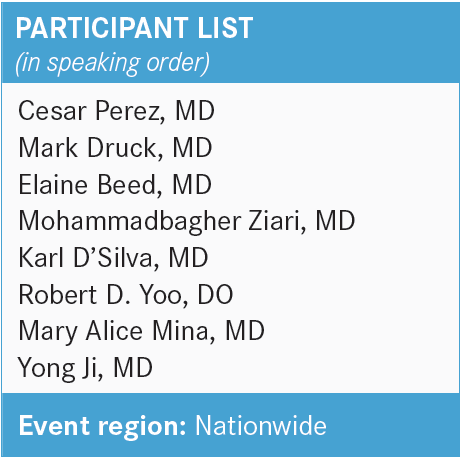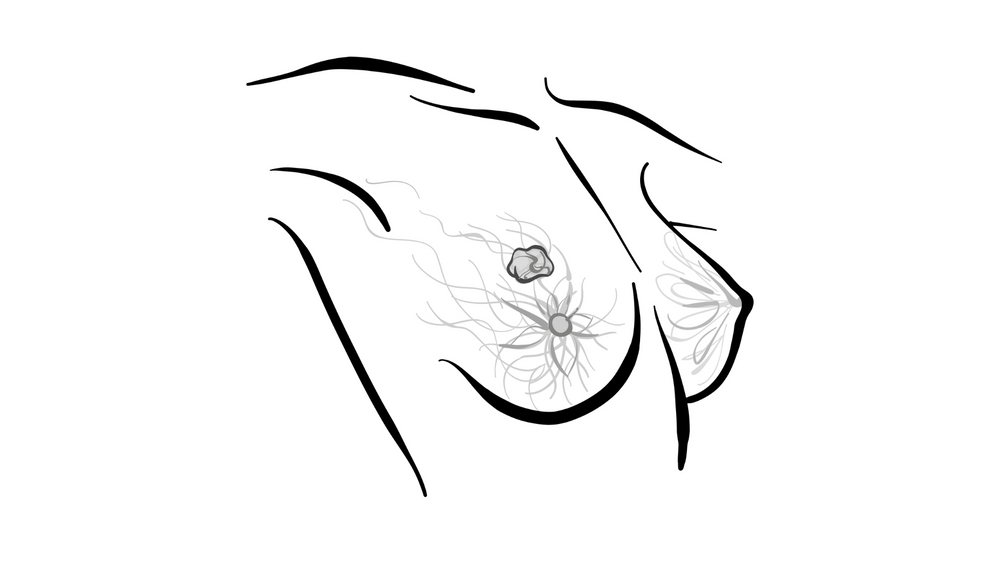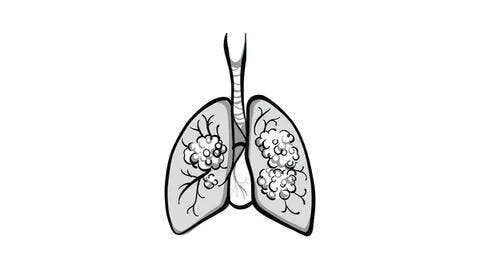Roundtable Discussion: Examining the Challenges of Hedgehog Pathway Inhibitors and Immunotherapy in Basal Cell Carcinoma
During a Targeted Oncology™ Case-Based Roundtable™ event, Francis P. Worden, MD, and Ian Maher, MD, discussed treatment approaches for a patient with basal cell carcinoma who was not a candidate for surgical or radiotherapy options.
Francis P. Worden, MD (Comoderator)
Clinical Professor
University of Michigan Health
Ann Arbor, MI

Ian Maher, MD (Comoderator)
Professor
Director of Dermatology
Mohs Fellowship Director
University of Minnesota Medical School
Minneapolis, MN


CASE SUMMARY
A man aged 88 years presented with a nonhealing ulcer on the lateral aspect of his nose. Ten years prior, he had surgical excisions of 2 nodular basal cell carcinomas (BCCs) of the trunk (0.4 × 0.4 cm and 0.5 × 0.8 cm, both with no perivascular or perineural invasion). Biopsy demonstrated infiltrative BCC. The multidisciplinary team is not in favor of surgery or radiotherapy for this lesion based on its size and location. After treatment options were discussed with the patient, the patient declined radiotherapy or surgery.
DISCUSSION QUESTIONS
- What do you view as the pros and cons of each treatment option for locally advanced/metastatic BCC?
- Have you used a Hedgehog pathway inhibitor (HHI) in your practice? If yes, please discuss your experience(s) with this class of agents.
- How should eligibility for an HHI be determined? Are there specific patients for whom you would not use an HHI but for whom you would use a PD-1 inhibitor?
- Do you have any experience using a PD-1 inhibitor in a patient with BCC who has not already received an HHI?
PEREZ: I treat a good [number] of patients with BCC, both with HHIs and with cemiplimab-rwlc [Libtayo]. I think the main unmet clinical need is that if a patient has no response to cemiplimab [but] responds [to HHIs], unfortunately it’s not [for] that long. [In addition to] the durability of HHIs, [another issue is] how to manage the adverse events [AEs] of the HHIs in the long term.
That’s part of what I see as an unmet need. There are pros and cons of this modality, which is mostly what I use. [One of] the pros is that it can control disease well, but with the AEs, patients have some issues in the long term.
Most patients end up losing a good amount of weight. Using the drug intermittently doesn’t help much. We usually have to hold the treatment for 2 weeks, or even 4 weeks, so the patient can catch up with their weight. That’s the main AE.
I don’t have a lot of concerns with cemiplimab, but the response rate in BCC is a little lower than in cutaneous squamous cell carcinoma [CSCC]. But that’s the issue with cemiplimab. It can work well, but not for all patients. This might be just because these are patients who have been treated before.
Obviously, cemiplimab is a lot easier to manage. But I did have some issues trying to get cemiplimab up front to some patients because of the insurance coverage. [The insurance companies] wanted me to use an HHI before [using cemiplimab].
WORDEN: That’s interesting, even though the label says otherwise.1 But I understand sometimes [that happens].
DRUCK: I am a general oncologist, and I treat all cancers. We’re giving [PD-1 and PD-L1 inhibitors] to all patients. I feel that the general response rate is going to be about 25% or 30%, but if a patient responds, they’re going to do very well in the long term. The problem with the HHIs is that there are a lot of AEs initially. I was impressed when I gave it to my patients, but then I experienced problems afterward. I would say to them, “But the cancer is better.” And they would tell me, “But I can’t eat, and I can’t smell.” We’re comfortable with immunotherapy. We’re giving it to everybody now, whatever the cancer.
WORDEN: If the insurance companies don’t give you a hard time about approval, would cemiplimab be your [first choice]?
DRUCK: I’d have to think about it. We don’t see enough of these cancers to say [we] have a standard regimen.
BEED: We see a lot of skin cancers, hidden under patients’ beards and under their hair. I used an HHI not long after it came out. I have a patient on it, and she does have problems. She’s now in her 90s. We keep her on the drug for 6 to 9 months [at a time]. Right now, she’s on a hold.
But I have started using the [PD-1/PD-L1 inhibitors].… I’m really impressed with the immunotherapies, and I like the HHIs, except that the patients lose weight.
ZIARI: If a patient is not a candidate [for an HHI] or if they progress on an HHI, I would use cemiplimab. I have used it for 4 years for CSCC, and I have used it for BCC. I haven’t been much impressed with the BCC response, though. It was approximately a 29% total response rate, and the complete response rate was 6% or less, but it still is better than the other options we have [From the Data2].
WORDEN: It’s interesting about the unmet needs. Some participants talk about AEs. One thing that’s interesting is that there are data that just came out for cemiplimab in CSCC in the neoadjuvant setting.3 Dr Maher, do you think there would be a role to treat these patients up front with these agents before going to surgery?
MAHER: For BCC, yes. You’re asking where gaps exist; I think a neoadjuvant indication is where a gap exists, for sure.
WORDEN: Yes, I agree.
D’SILVA: I’ve done that in patients with CSCC who are unresectable. And I do get a PD-L1 status for all my patients. It is not necessary, but if it is positive, it gives you the feeling that the patient is going to respond, and patients are [then] able to go for surgical resection.
WORDEN: Yes, it’s great. The data were just published in the New England Journal of Medicine.3 I think that’s fantastic. I do think that there is a need there. We have a paper that we published in Oncologist, for BCC of the eye, [that showed a] 100% organ-preservation rate [with vismodegib (Erivedge)], so that patients can salvage their vision and have surgery that was downgraded from orbital exenteration.4 I think there’s more of a need as this comes forward.
I think one thing that we really need to pay attention to is fatigue. A lot of these patients are older. I have seen fatigue that can easily be nearly grade 2 or even grade 3 after 1 cycle of treatment. Some of these older patients become profoundly fatigued.
CASE UPDATE
The patient was started on vismodegib 150 mg oral daily.
DISCUSSION QUESTIONS
- For how long do you typically continue an HHI?
- What are the systemic therapy options for this patient?
- What are the goals of therapy for patients like this with infiltrative BCC who are not good candidates for surgery?
WORDEN: The patient whom we presented earlier declined surgery and radiation therapy, and he was started on vismodegib. Some of you already talked about how you use this drug, treating for 9 months and then giving a break. [In regard to systemic therapy options,] I think we have 2, maybe 3, options. And what are the goals of therapy?
D’SILVA: The HHIs are typically used by the dermatologists. When they refer to medical oncology, we use immunotherapy. I’ve used [an HHI] only once for my patient, but I’ve been a big fan of immunotherapy.
WORDEN: That’s interesting. It sounds like Dr D’Silva doesn’t routinely prescribe the HHIs. I’m curious to know, of the folks here who are medical oncologists, is that true for all of you? Or is that not necessarily true?
YOO: I think, overall, unless you’re at a high-volume skin malignancy center, it’s pretty rare. But I am in a unique situation. I work with a lot of skull base surgeons here, so I do get a lot of [patients with] unresectable BCC going into the eye or skull base. I had a similar situation, and I had to do neoadjuvant therapy with an HHI. I think the partial response rate of my preferred choice was close to 50%, although some AEs can be daunting [in regard to maintaining] quality of life.5
WORDEN: Dr Mina, I have a question for you, [as a dermatologist and Mohs surgeon]. Do you prescribe primarily vismodegib, or do you use sonidegib [Odomzo]? I’m curious to know what your method is, outside of surgery.
MINA: I exclusively prescribe vismodegib, simply because that was the one that came out first. I haven’t tried sonidegib.
WORDEN: Is that true of everybody else who prescribes these, that your first [choice] would be vismodegib?
ZIARI: Yes, it is true for me. I have used vismodegib for several years, and I feel comfortable managing the AEs and the dosing.
WORDEN: I know Dr Mina wouldn’t be using cemiplimab in her dermatology-Mohs surgery practice. For medical oncologists, do these patients show up without having been treated with HHIs, or are they almost always treated with HHIs [first], and then they come to you because they failed, and now you need to give them immunotherapy?
YOO: The patients coming to my clinic are mostly naive to systemic therapy.
PEREZ: Some dermatologists are comfortable with it. Most of the [dermatologists] that refer to me don’t use HHIs. They just refer the patients, [and] we give them systemic therapy. But I think every practice is different.
JI: I was sent a patient to [prescribe HHIs; what they were told was “oral chemotherapy”].
WORDEN: At our center, it’s interesting. The ophthalmologists and the head and neck surgeons will send [patients] to me, and I start with HHIs, [or] sometimes with cemiplimab. But there are dermatologists [who treat patients with conditions] like Gorlin syndrome in their clinics as well, so, here at the University of Michigan, it’s a mixture of both.
MAHER: I would say it’s probably the exception rather than the rule to have a dermatologist prescribe it. I personally do, but I get sent these patients by other dermatologists.
WORDEN: Yes. Dr Mina, do you feel comfortable now, after prescribing these drugs, dealing with the AEs?
MINA: I think most surgeons probably use [vismodegib] a good bit. I know a lot of my friends and colleagues use it. Like Dr Maher said, a lot of our general dermatology colleagues will send [patients] to us [for] it. I feel fine prescribing it. Patients usually take drug holidays. They always seem to get the AEs. But when I feel like they’ve reached the [limit] on taking it, or if they have fatigue, then I will send [them] to medical oncology.
JI: Maybe this is a little different in the academic centers vs in community practice. I [find it] hard to imagine that our dermatologist colleagues in the community would like to write a prescription for [what they may refer to as an “oral chemotherapy”].
MAHER: Yes, but the thing is, it’s not chemotherapy, right? I always tell dermatologists, “You prescribe methotrexate [Trexall] and cyclosporine [Neoral] with impunity. Those are far more dangerous than an HHI.” What trips up the dermatologists is the oncologic monitoring of effect; that is, getting into the habit of getting baseline scans and knowing when to do monitoring scans. I think that’s the part that a lot of physicians don’t want to be responsible for, if they’re less oncologically focused.
DRUCK: The referral patterns are changing.… The medical oncologists are being bought out by the local hospitals. I started my practice about 33 years ago. Now we have about 30 physicians at my local hospital, multispecialty and multioncology. And what’s happening is that any [physician] who wanted to give these drugs on their own is not doing that anymore.
They’re beginning to realize that there’s a beehive of activity here, and they’re realizing that it’s just not worth the time, effort, money, etc, to do it. I think we should recognize that the single dermatologists are all being bought out, and the single medical oncologists are gone. So, it doesn’t seem to me that you’re going to see as much of this activity.
WORDEN: Yes, it’s interesting. Along with [that, HHIs] can be an oral medication, [in contrast with] intravenous chemotherapy or immunotherapy, [with the focus] more on office visits and managing AEs. I can definitely see a commercial aspect to this.
CASE UPDATE
After 2 months on therapy, the patient experienced painful joints and muscle spasms; he had lost 10 lb since treatment initiation. His muscle pain did not significantly improve with nutritional and hydration counseling, physical therapy, or amlodipine [Norvasc]. Additionally, he experienced dysgeusia.
Vismodegib was held for 2 weeks. Symptoms returned after reinitiation. The patient expressed reservations about continuing therapy.
WORDEN: When you give breaks and then reinitiate treatment, how many times do you feel like you’re successful?
MINA: I guess I’m unsuccessful, ultimately, because every patient I’ve put on vismodegib has ultimately stopped.
WORDEN: Fair enough.
MINA: I don’t have a great track record, but I have had success with patients being on [vismodegib] for about a year and a half; that would probably be my maximum. A lot of these patients are lost to follow-up. They don’t follow up with anyone.
MAHER: [Lack of follow-up is probably] how they got to have locally advanced disease in the first place.
MINA: Exactly.
WORDEN: And once in a while, some of these patients may have some durability of response and not come back. I have that issue with my patients as well.
BEED: I certainly think [cemiplimab] works. I don’t see where it would be different. I’m a medical oncologist in a rural area, so we treat everything, [including] a lot of complex patients. I feel comfortable [using cemiplimab]. It’s worked well, but a lot of times the patients have comorbidities or other cancers, and so you treat the [BCC], because a patient has some deformity on their ear or whatever, and the patient ends up dying of something else before [the BCC] becomes a problem. These patients are not young.
DRUCK: The issue for me is [determining] when would I stop the treatment. Most of the immunotherapies probably work within the first 4 cycles, and even though we give it for 1 or 2 years, the truth is that when the patients respond, [and then] they go off treatment, you can see they’re still responding. So, if you see a locally advanced tumor, the question in my mind is, if I give the patient 3 or 4 cycles and [the cancer] goes away, would I stop treatment? As opposed to a metastatic cancer, where I’m stuck because of the FDA approval,6 and I have to continue to treat.
WORDEN: That’s a good question: when do we stop? I don’t know that we know, but it is an interesting question that you pose. Something that I’ve done is to treat with vismodegib, and then [when] patients progressed, I’ve put them on cemiplimab. Then if there’s progression, I’ve had responses when I’ve restarted the vismodegib while the patients are [still] on the cemiplimab. I’ve had some success with that. I don’t know how much duration there is, because I haven’t studied it. For some reason, I do occasionally see some reinitiation of the change in the microenvironment by restarting the small molecule inhibitor.
REFERENCES
1. Libtayo. Prescribing information. Regeneron Pharmaceuticals; 2021. Accessed January 3, 2023. https://bit.ly/3GFoJ74
2. Stratigos AJ, Sekulic A, Peris K, et al. Cemiplimab in locally advanced basal cell carcinoma after hedgehog inhibitor therapy: an open-label, multi-centre, single-arm, phase 2 trial. Lancet Oncol. 2021;22(6):848-857. doi:10.1016/ S1470-2045(21)00126-1
3. Gross ND, Miller DM, Khushalani NI, et al. Neoadjuvant cemiplimab for stage II to IV cutaneous squamous-cell carcinoma. N Engl J Med. 2022;387(17):1557-1568. doi:10.1056/NEJMoa2209813
4. Kahana A, Unsworth SP, Andrews CA, et al. Vismodegib for preservation of visual function in patients with advanced periocular basal cell carcinoma: the VISORB trial. Oncologist. 2021;26(7):e1240-e1249. doi:10.1002/ onco.13820
5. Bertrand N, Guerreschi P, Basset-Seguin N, et al. Vismodegib in neoadjuvant treatment of locally advanced basal cell carcinoma: first results of a multicenter, open-label, phase 2 trial (VISMONEO study): neoadjuvant vismodegib in locally advanced basal cell carcinoma. EClinicalMedicine. 2021;35:100844. doi:10.1016/j.eclinm.2021.100844
6. FDA approves cemiplimab-rwlc for locally advanced and metastatic basal cell carcinoma. FDA. February 9, 2021. Accessed January 3, 2023. https:// bit.ly/3iAIaWA


















